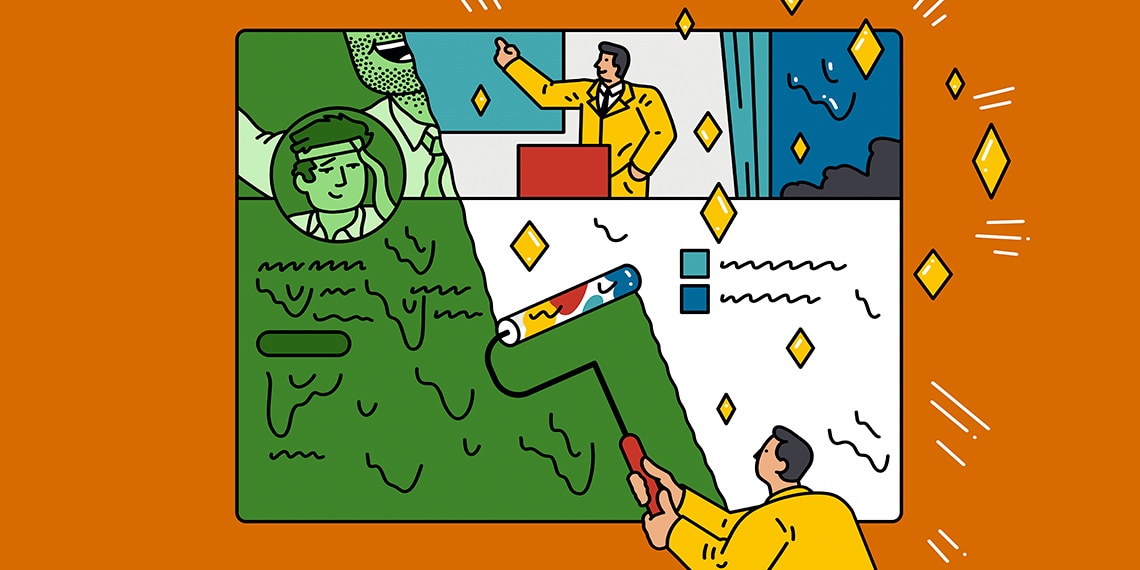
On the hunt for a new job? Well, you’re probably going to need to work on your LinkedIn profile. After all, just about every Fortune 500 company recruits from the professional social network, according to a study by the University of Massachusetts Dartmouth.
Yet, even as it’s more important than ever to have a high-impact LinkedIn profile, there are some common mistakes that are pretty easy to avoid. Maybe you forgot to change the URL for your profile (pro tip: use letters and skip the numbers), or you have a nonprofessional photo (and, yes, there’s such a thing as a “too formal” photo as well), or maybe you just haven’t updated your “About” summary in ages.
Here are eight of the most common mistakes—and how to fix them.
Mistake No. 1: You Choose the Wrong Profile Picture
Recruiters often scroll through hundreds if not thousands of profiles each session, and having a photo can help you stand out. In fact, LinkedIn says its research shows that profiles with a photo get viewed 14 times more often than those without one.
But having a photo is not enough—you need a good headshot that clearly depicts how you look now. You should pick a high-resolution (400x400 pixels) image, and your face should occupy about 60% of the photo. Make sure you are smiling in your photo and have the shot taken in soft, natural lighting. If you’re applying for a senior managerial position, it might be worth posting an action shot, like one of you behind a podium while giving a speech, to help convey gravitas.
Mistake No. 2: You Use Too Many Buzzwords
Maybe terms like “changemaker” and “agile” are regular parlance in your office. But without context, these phrases often serve more as distraction than description, so you won’t distinguish yourself by using them.
Luckily, LinkedIn regularly releases helpful lists of overused words that you can consult while writing your profile. In the U.K., for example, people working in the marketing industry tend to overuse terms like “passionate,” “experienced,” “expert” and “track record.”
Mistake No. 3: You Didn’t Customize Your URL
LinkedIn issues a default URL to users, which is usually a random combination of words and numbers. That’s convenient for the company but not the most professional look for you. To build your brand, personalize your URL by changing it to include your name or a message you hope to convey. The new, tightly worded URL can also be placed on a business card or on your resume, making it easy for potential hiring managers to access your account.
QR codes were once considered passé, but they are seeing a resurgence in the COVID-19 era. So also consider creating a QR code that redirects to your account, which you can then place on your business card or resume.
Mistake No. 4: Your Headline Just Reflects Your Job Title
You are more than your current role. And, in an age of title inflation, job titles are not necessarily reflective of what we do. Instead, use your headline—which LinkedIn sets by default to your job title—to describe what you do; instead of “marketing manager,” try “marketing manager, content developer and website owner,” for instance. Remember that this is often the first thing that a recruiter sees.
Mistake No. 5: You Leave Your Summary Blank
On your profile, this is the “About” section directly below your vital statistics. You should use this copy block to highlight key accomplishments and lure the reader in further. Also consider using SEO techniques and drop in keywords for which recruiters are likely to scan. (But remember Mistake No. 2 and make sure you’re not using meaningless terminology.)
If you already have a dream job in mind, you can weave in language that’s already in the job posting to underline your commitment and skill set to a recruiter.
Mistake No. 6: You Aren’t Active on LinkedIn
Don’t be a lurker. Instead, join one of LinkedIn’s many communities—there are millions of groups, and about half of LinkedIn users belong to at least one of them—and be an active participant while you are job hunting.
While you’re there, don’t be afraid to ask for help and tell people you are actively looking for a job. Professional matchmaking, after all, is precisely why LinkedIn exists.
Mistake No. 7: You Don’t Have Any Professional Recommendations
Ask trusted colleagues to write profile recommendations for you, endorsing you for your expertise in relevant skills. LinkedIn users with at least five endorsed skills get up to 17 more page views as those without any.
Older job seekers looking for opportunities in fields populated with younger people can also benefit by asking younger colleagues to endorse and recommend them, which can be a subtle signal to recruiters that you’re adaptable and can work across age groups. Note that not all endorsements are good endorsements. Certain skills, for instance, may no longer be in use. So cull them regularly.
Mistake No. 8: You Didn’t Include Relevant Volunteer Experience
This is especially useful if you’ve been out of the workforce for some time. According to one survey, 42% of managers say that volunteer experience is equivalent to the type of experience you get when you work. Not only that, but in a time when public image really matters, companies prize employees with experience in community outreach.
Katerina Ang is a freelance writer and former editor at Vogue Business and The Wall Street Journal.
READ MORE: 5 Things You Need to Do as Soon as You Get Your First Job

